The Deadly Sisterhood of Powerful Women of Renaissance: Book Spotlight and Giveaway (US only)
When I first heard of this book, dear readers, I knew I had to read it. It's about Renaissance (which I love) and powerful women in its history (subject I can not resist), so I begged Harper Collins to allow me to spotlight the book and its heroines in exchange for a giveaway.
Unfortunately the giveaway is only limited to US because the hardback is heavy and expensive, but it also has some gorgeous illustrations that is a must for a fan of the era.
Allow me to briefly introduce you to The Deadly Sisterhood...
Lucrezia Tornabuoni
In Florence, a city where there was no princely court to provide titles
of authority to women and at a time when women were
frequently kept from the public sphere of men, Lucrezia Tornabuoni
(b. 1425–d. 1482) exercised an impressive influence over
the politics and culture around her. Her parents were members of
two of the oldest and most powerful Florentine families,
the Tornabuoni and Guicciardini, and with her marriage to the
eldest son of Cosimo de’ Medici, she was destined to become
the prima donna of the city. Her family network would, in
fact, serve as her source of influence: she was sister to the banker
Giovanni Tornabuoni,
wife of Piero de’ Medici, the de facto head of the Republic,
mother of Lorenzo “the Magnificent,” and grandmother of future
popes Leo X and Clement VII. Lucrezia would act as close advisor
to her brother, husband, and children as well as overseeing
the education of many of her grandchildren. Her influence extended
beyond expected roles of domestic management, and in Tornabuoni’s
case specifically, her activities would include that of landowner,
business woman, patron, political emissary, and poet.
Clarice Orsini
Clarice Orsini was the daughter of Jacopo Orsini, Lord of Monterotondo
and Bracciano, and his wife and cousin Maddalena Orsini. Born in the
Papal States, she is most known as the wife of Lorenzo de' Medici, de
facto ruler of the Florentine Republic.
Clarice married Lorenzo by proxy when she was 16. The marriage was
arranged by Lorenzo's mother, who wanted her eldest son to marry a woman
from a noble family, in order to enhance the social status of the
Medicis. Clarice was not initially popular in Florence because her
strict religious personality was in deep contrast with the humanist
ideals of the age.
Despite the initial circumstances of their marriage, Clarice quickly proves herself to be much more than a political pawn. Sharp, patient, and deeply committed to Lorenzo, she’s a valuable advisor to her husband.
Despite the initial circumstances of their marriage, Clarice quickly proves herself to be much more than a political pawn. Sharp, patient, and deeply committed to Lorenzo, she’s a valuable advisor to her husband.
Beatrice D'Este
Beatrice d'Este (29 June 1475 – 3 January 1497), duchess of Bari and later of Milan, was the wife of the Milanese ruler Ludovico Sforza (known as "il Moro"). She was one of the most beautiful and accomplished princesses of the Italian Renaissance. A member of the Este family, she was the younger daughter of Ercole I d'Este and the sister of Isabella d'Este and Alfonso d'Este. Along with her sister, Beatrice was noted for her excellent taste in fashion and for having invented new clothing styles.
Beatrice belonged to the best class of Renaissance women, and was one of
the cultural influences of the age; to a great extent, her patronage
and good taste are responsible for the splendour of the Castello Sforzesco in Milan, the Certosa of Pavia, and many other famous buildings in Lombardy. A fresco with her portrait faces da Vinci's Last Supper in the refectory of Santa Maria delle Grazie in Milan.
Caterina Sforza
Caterina Sforza, Countess of Forlì (early 1463 – 28 May 1509) was an Italian noblewoman, the illegitimate daughter of Galeazzo Maria Sforza, Duke of Milan and Lucrezia Landriani,
the wife of the courtier Gian Piero Landriani, a close friend of the
Duke. Raised in the refined Milanese court, Caterina later held the
titles of Lady of Imola and Countess of Forlì, by her marriage to Girolamo Riario. She was also the Regent for her first-born son, Ottaviano. The descendant of a dynasty of noted condottieri,
Caterina, from an early age, distinguished herself by her bold and
impetuous actions taken to safeguard her possessions from possible
usurpers, and to defend her dominions from attack, when they were
involved in political intrigues that were a distinguishing feature of
15th century Italy.
In her private life Caterina was devoted to various activities, among which were experiments in alchemy and a love of hunting and dancing. She had a large number of children, of whom only the youngest, Captain Giovanni dalle Bande Nere, inherited the forceful, militant character of his mother.
Isabella D'Este
Isabella d'Este (18 May 1474 – 13 February 1539) was Marchesa of Mantua and one of the leading women of the Italian Renaissance as a major cultural and political figure. She was a patron of the arts as well as a leader of fashion, whose innovative style of dressing was copied by women throughout Italy and at the French court. The poet Ariosto lauded her as the "liberal and magnanimous Isabella", while author Matteo Bandello described her as having been "supreme among women". Diplomat Niccolò da Correggio went even further by hailing her as "The First Lady of the world".
She served as the regent of Mantua during the absence of her husband, Francesco II Gonzaga, Marquess of Mantua and the minority of her son, Federico, Duke of Mantua. In 1500 she met King Louis XII of France in Milan on a diplomatic mission to persuade him not to send his troops against Mantua.
She was a prolific letter-writer, and maintained a lifelong correspondence with her sister-in-law Elisabetta Gonzaga. Lucrezia Borgia was another sister-in-law; she later became the mistress of Isabella's husband.
source
Guilia Farnese
Giulia Farnese (1474 – 23 March 1524) was mistress to Pope Alexander VI. She was known as Giulia la bella, meaning "Julia the beautiful" in Italian. Lorenzo Pucci described her as "most lovely to behold." Cesare Borgia, son of Alexander VI, described her as having "dark colouring, black eyes, round face and a particular ardor."
source
Isabella D'Aragona
or Isabella of Naples (2 October 1470 – February 11, 1524) was the daughter of King Alphonse II of Naples by his wife, Ippolita Maria Sforza. From 1489 to 1494, she was the Duchess consort of Milan, and from 1499 to 1524 the Duchess of Bari and Princess of Rossano. After her brother Ferdinand II's death, she was the heir of the Brienne claim to the title King of Jerusalem.
She married her first cousin, Gian Galeazzo Sforza, who at the time was the Duke of Milan. However, his uncle Ludovico Sforza was the de facto ruler.
source
Internet is rife with rumours that Isabella is the face behind Mona Lisa's portrait...
Lucrezia Borgia
Lucrezia Borgia (18 April 1480 – 24 June 1519) was the daughter of Pope Alexander VI, and Vannozza dei Cattanei. Her brothers included Cesare Borgia, Giovanni Borgia, and Gioffre Borgia.
Lucrezia's family later came to epitomize the ruthless Machiavellian politics and sexual corruption alleged to be characteristic of the Renaissance Papacy. Lucrezia was cast as a femme fatale, a role she has been portrayed as in many artworks, novels, and films.
source
Wouldn't you want to know more about these fascinating women?
UK cover US cover
Summary
Summary
The book is one of
drama on a grand scale, a Renaissance epic, as Christendom emerged from
the shadows of the calamitous 14th century. The sweeping tale involves
inspired and corrupt monarchs, the finest thinkers, the most brilliant
artists, and the greatest beauties in Christendom.
Here is the story of eight of its most remarkable women, who are all joined by birth, marriage and friendship and who ruled for a time in place of their men-folk: Lucrezia Turnabuoni (Queen Mother of Florence, the power behind the Medici throne), Clarice Orsini (Roman princess, feudal wife), Beatrice d'Este (Golden Girl of the Renaissance), Caterina Sforza (Lioness of the Romagna), Isabella d'Este (the Acquisitive Marchesa), Giulia Farnese ('la bella', the family asset), Isabella d'Aragona (the Weeping Duchess) and Lucrezia Borgia (the Virtuous Fury). The men play a secondary role in this grand saga; whenever possible the action will be seen through the eyes our eight heroines.
These eight women experienced great riches, power and the warm smile of fortune, but they also knew banishment, poverty, the death of a husband or the loss of one or more of their children. As each of the chosen heroines comes to the fore in her turn, she is handed the baton by her 'sister' and Leonie Frieda recounts the role each woman played in the hundred-year drama that is THE DEADLY SISTERHOOD.
Here is the story of eight of its most remarkable women, who are all joined by birth, marriage and friendship and who ruled for a time in place of their men-folk: Lucrezia Turnabuoni (Queen Mother of Florence, the power behind the Medici throne), Clarice Orsini (Roman princess, feudal wife), Beatrice d'Este (Golden Girl of the Renaissance), Caterina Sforza (Lioness of the Romagna), Isabella d'Este (the Acquisitive Marchesa), Giulia Farnese ('la bella', the family asset), Isabella d'Aragona (the Weeping Duchess) and Lucrezia Borgia (the Virtuous Fury). The men play a secondary role in this grand saga; whenever possible the action will be seen through the eyes our eight heroines.
These eight women experienced great riches, power and the warm smile of fortune, but they also knew banishment, poverty, the death of a husband or the loss of one or more of their children. As each of the chosen heroines comes to the fore in her turn, she is handed the baton by her 'sister' and Leonie Frieda recounts the role each woman played in the hundred-year drama that is THE DEADLY SISTERHOOD.
Release date: April 2nd 2013
Buy:

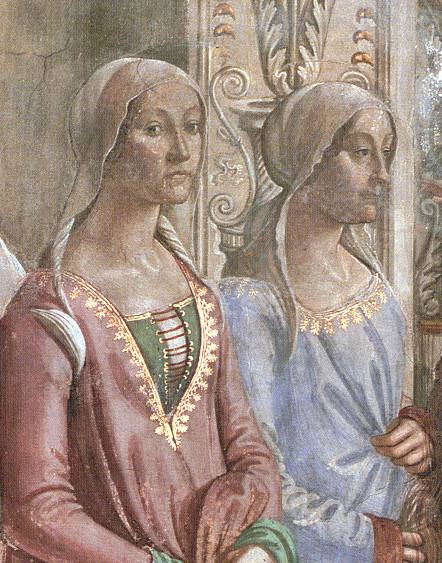

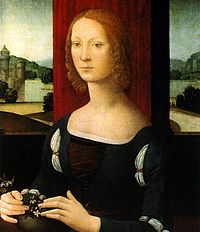
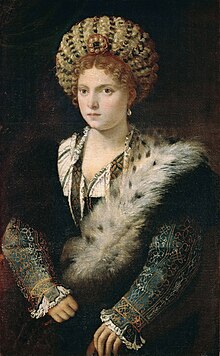


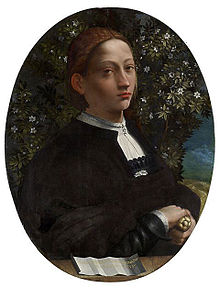

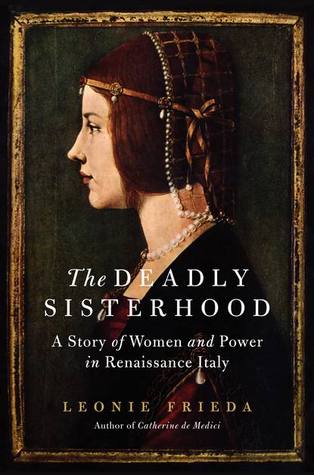


They all sound so fascinating :D
ReplyDeleteWow this sounds fascinating!
ReplyDeleteAwesome. Love learning about new historical figures. Thanks!
ReplyDeleteAnd a strong woman I admire from history is Corrie Ten Boom!
ReplyDeleteI've always admired Eleanor Roosevelt. She was such an amazing woman!
ReplyDeleteA strong woman in history that I admire.. hmm.. I'd have to say Mary Magdalene! I'm not the most religious person in the world but I do believe in Jesus Christ so in the sense of religious history if nothing else, I'd say that that woman is at the very top of the Important Woman of History list! :)
ReplyDeleteI think I'd choose Jane Austen or Charlotte Bronte.
ReplyDeleteI've always thought Marie Curie was an inspiration. She died for her research and was brave enough to make a path in science even though in that day and age it was unheard of for a woman to do so.
ReplyDeleteThanks for the giveaway!
mestith at gmail dot com
Thanks, Ula and Blodeuedd! :)
ReplyDeleteI have always admired Eleanor Roosevelt!
ReplyDeleteHi, Kara!
ReplyDeleteOh, what a BOOK!!! I WANT this book!! We women need strong female role models to look up to, and this book has a FASCINATING group of strong women to admire!!
The strong women in history that I can think of are either artists or authors, and I admire them all! The artists are Georgia O'Keeffe, Mary Cassatt (these were American artists), Artemisia Gentileschi and Sofonisba Anguissola (Italian Renaissance artists), and Emily Carr (a Canadian artist whose life is detailed in "The Forest Lover", by Susan Vreeland).
As for authors, I greatly admire the English author Charlotte Bronte, whose heroine, Jane Eyre, was a very independent, strong heroine, Virginia Woolf, another English writer, who paved the way for so many female writers, and Pearl S. Buck, an American writer who won the Pulitzer Prize and worked in support of civil and women's rights. Then there's Harper Lee, another American writer and Pulitzer Prize winner, whose novel, "To Kill a Mockingbird" is a classic and perennial bestseller. I've recently become acquainted with a Cuban author, Daina Chaviano, who now lives in Miami, Florida. I read one of her books, "The Island of Eternal Love", and it's now one of my favorites!! This writer had to fight for freedom of expression when she lived in Cuba. Now she can write whatever she wants, with no governmental censure. She's a prolific writer, too; she has several SF and fantasy titles to her credit. Most of them are yet to be translated into English, though. "The Island of Eternal Love" is the only one so far, I think. I read it in Spanish, since I'm fluent in that language, but I also want to read it in English. In Spanish, the title is "La Isla de los Amores Infinitos".
Thanks for this TERRIFIC giveaway!!!! :)
OMG!!!!!! I WON THIS JEWEL OF A BOOK!!!! YAY!!! I can hardly believe it!! Thank you, Kara, for offering such a WONDERFUL prize for your giveaway!!! Have a TERRIFIC day tomorrow!!! :)
ReplyDelete